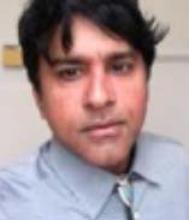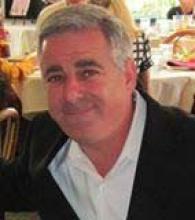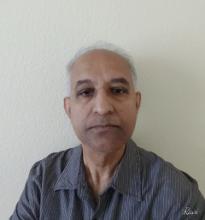Matter Matters - Cradle to Cradle Design and the Circular Economy

Dr. Sudeep Motupalli Rao
Regional Director
EPEA San Francisco
Thu, 10/02/2014
Abstract – There's massive innovation now in materials, products, processes, technologies and systems. In this interdisciplinary talk, Sudeep will share how Cradle to Cradle® design (C2C), eliminates the concept of waste and keeps the technical and biological materials flowing in a macro-integrated manner. Waste=Food. This global circular economy is regenerative by design and worth $1Trillion per year. C2C is a systematic methodology, a robust framework, a professional practice, and a certification standard for well-designed and engineered products. This is especially relevant since the people of California recently passed the Safer Consumer Products Act to address the safety of all consumer products and now the regulations kick in this Fall. Sudeep will present many examples of elegant C2C innovations in the world of industrial business to create inspiring new materials and products.
Dr. Sudeep Motupalli Rao is a chemical engineer who worked in the field in water and wastewater treatment for steel plants in India as well as R&D of hybrid material coatings at UNM/Sandia National Labs in New Mexico. He worked in the semiconductor industry for a few years in surface metrology and global team development. He spent a few painful yet blissful years in the NGO world. Design is his passion. He enjoys teaching while learning. He has a bachelors degree in Chemical Engineering from the Rural Engineering College in India, a Masters degree in Chemical Engineering from the University of New Mexico and an interdisciplinary PhD in Engineering from UNM. Go Lobos, the real ones!
The Future of Enterprise Cloud Computing

Mr. David Krauthamer
CEO and Managing Partner
Intelenex
Thu, 09/18/2014
Abstract – Dave will talk about the current landscape of enterprise cloud computing and the impact on growth of high technology companies. We’ll also review the process of rolling out large scale Cloud Applications at companies like Lyft / Pandora / Riot Game, etc. Finally, as Dave was a graduate of Sonoma State’s Computer Science Department, he will discuss the mechanics of building your own high growth company. If your an Entrepreneur at heart, join us to talk about the future of enterprise computing.
Mr. David Krauthamer - Information Systems executive with over 20 years of experience in the high technology, Internet Services and Financial Sectors. He has served as CIO at Advanced Fiber Communications, where he was responsible for implementing and deploying an enterprise wide information strategic plan. Dave has extensive experience implementing ERP, CRM, Supply Chain and Engineering systems. He is currently the CEO of Intelenex a Global Systems integrator for Oracle. Over the past several years Intelenex has grown into one of the largest Oracle Cloud implementation partners in the world. In that capacity Intelenex works with enterprises to transition their applications into the realm of Cloud Computing. Dave holds a B.S. in Computer Science and has completed executive programs at Stanford and California Institute of Technology.
5G Mobile Communications: The Vision for 2020 and Beyond (2014)

Mr. Roger Nichols
5G Program Manager
Keysight Technologies
Thu, 09/04/2014
Abstract – With 4G deployment still growing, the industry is defining the next generation of wireless communications known as “5G”. Envisioned for commercialization sometime after 2020, 5G will be “Amazingly Fast with Great Service in a Crowd”. It will have the “Best Experience Following You with Super Real-time and Reliable Communications” and “Ubiquitous Things Communicating”. This vision outlined by the METIS consortium represents a revolution in the way we think about mobile communications. Research is under way to assess and prove out the enabling technologies. This presentation will cover the industry drivers, an examination of some of these enabling technologies, how measurement is critical to the process.
Mr. Roger Nichols is the 5G Program Manager for Keysight Technologies (formerly Agilent Technologies Electronic Measurement Business). His nearly 30 years of experience in the wireless industry spans various roles in Manufacturing and R&D and crosses the evolution from analog cellular radio through LTE and beyond. He spent the last ten years as the Marketing Director for Agilent’s Mobile Broadband Operation responsible for delivering the Wireless Testsets and systems which are used in all major design and certification labs as well as manufacturing facilities worldwide.
Machine learning for Signal Processing

Dr. Bala RaviKumar
Professor
CS and ES Departments, SSU
Thu, 04/17/2014
Abstract – Machine learning is increasingly popular for solving a wide-range of problems. Instead of explicitly programming a computer to solve a problem, machine learning allows a computer to create a model based on sample solutions (called training set) and use the model to solve problems. Machine learning is routinely used to solve problems such as voice recognition, image classification, translation from one language to another etc. In this talk, we will survey the role of machine learning in the area of human-brain interface using the EEG and related signals.
Dr. Ravikumar received his Ph.D. at the University of Minnesota and has taught at the University of Minnesota, University of Rhode Island, and San Francisco State University. He has been with Sonoma State University since 2001. Ravi’s areas of interest include Algorithm Design, Theory of Computation, Pen-based computing, Data Mining, and Bioinformatics. He has supervised more than 25 Master's theses and 3 Ph.D. theses. He has served on the program committees of several international conferences, and most recently Ravi organized a conference on the Applications of Automata Theory in San Francisco in Summer 2008. He is currently co-editing a special issue of the International Journal of the Foundations of Computer Science.
Next Generation Cellular & WLAN - Networks, Devices and Services

Mr. John Harmon
Applications Planning and Marketing Manager
Agilent Technologies
Thu, 04/03/2014
Abstract – Wireless has become intrinsic within our lives. People, machines and devices yearn to be connected anywhere, all the time. We will look at two growing segments of wireless technology: 5G Cellular and WLAN to see how this might be realized.
Mr. John Harmon has worked for Hewlett-Packard/Agilent for 34 years. In that time, he has held various positions in R&D, Manufacturing, Marketing, Business Development and now Application Marketing in Agilent Microwave Communications Division. John currently focuses on next generation WLAN technologies and is an Agilent representative to the Wi-Fi Alliance and IWPC Industry Consortium.